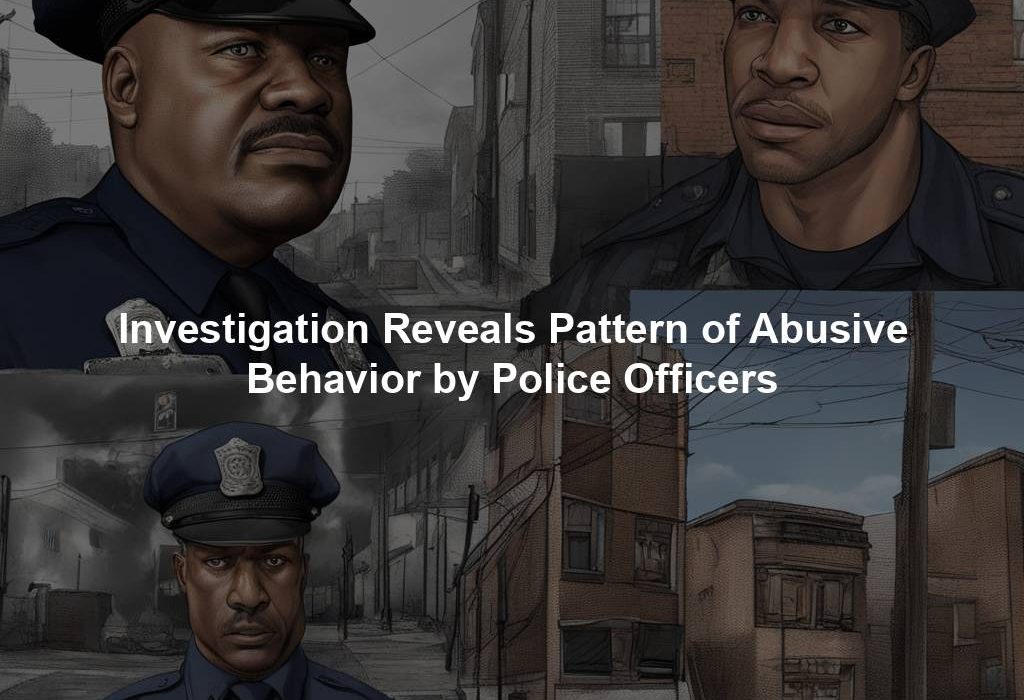Exposing a Disturbing Reality: Police Officers’ Pattern of Abuse Unveiled
In recent times, the spotlight on police brutality and misconduct in the United States has intensified. With the proliferation of cell phone cameras and social media platforms, instances of police violence have been documented and disseminated widely, provoking national outrage and demands for accountability. Nevertheless, a recent inquiry has unearthed a disquieting pattern of abusive behavior by police officers that transcends isolated occurrences.
This investigation, spearheaded by a coalition of journalists and researchers, scrutinized data from over 1,000 police departments nationwide. The revelations delineate a troubling continuum of excessive force, misconduct, and power abuse by law enforcers. From unwarranted use of force in arrests to racial profiling and discriminatory actions, the report paints a dismaying picture of law enforcement in America.
A pivotal revelation from the investigation is the disproportionate use of force against marginalized communities. Individuals of color, notably Black and Latino demographics, are disproportionately subjected to police violence compared to their white counterparts. Data analysis from the study indicates that African Americans are three times more likely to fall victim to police killings than white Americans, shining a stark light on racial bias entrenched within law enforcement practices.
Moreover, the investigation unveiled a culture of impunity within police departments, where officers seldom face consequences for their transgressions. Frequently, officers engaging in abusive conduct receive minimal disciplinary measures, if any, and continue their law enforcement duties devoid of repercussions. This lack of accountability perpetuates a cycle of misconduct and violence, further corroding trust between the police and the communities they serve.
Another distressing facet unearthed by the investigation is the prevalence of psychological and emotional abuse by police officers. Reports abound of officers resorting to intimidation, threats, and coercion to manipulate and control individuals, fostering an environment of fear and distrust, notably among vulnerable factions such as immigrants, the homeless, and individuals grappling with mental health challenges.
Aside from abuse directed towards civilians, the investigation also shed light on instances of harassment and mistreatment within police departments themselves. Whistleblowers and officers speaking out against misconduct often face retaliation and bullying from their peers and superiors. This toxic organizational climate not only stifles dissent but also impedes endeavors to address systemic issues within law enforcement agencies.
Furthermore, the inquiry revealed a lack of transparency and accountability in handling complaints against police officers. Many departments house internal review processes lacking impartiality and marred with conflicts of interest. Complaints are routinely disregarded or swept under the rug, leaving victims without recourse and affording abusive officers free rein to perpetuate their deleterious behaviors unchecked.
Despite these disconcerting findings, initiatives are underway to address systemic issues in law enforcement. Calls for police reform, encompassing the adoption of de-escalation training, body cameras, and community oversight boards, have gained momentum. Some departments have taken strides to enhance accountability and transparency by instating early warning systems to identify officers with a history of misconduct.
Nonetheless, genuine reform necessitates a concerted endeavor from policymakers, law enforcement entities, and the populace. It is imperative to uphold police officers accountable, tackle the root causes of abuse and misconduct, and endeavor towards fostering trust and cooperation between law enforcement and the communities they serve. Only by acknowledging and remedying the patterns of abusive behavior within police departments can a fair and just policing system be forged for all.
As the discourse on police brutality and misconduct endures, it is paramount to remain vigilant and proactive in advocating for change. By spotlighting the patterns of abuse within law enforcement, progress can be made towards a future where all individuals receive dignity and respect from those entrusted to safeguard and serve them.
Sources:
– “Fatal Force” database by The Washington Post
– “The Counted” project by The Guardian
– “Police Violence Report” by Amnesty International
– “Ear to the Ground” report by Human Rights Watch
– “The Bad Cop Database” by ProPublica
[Infographic: Statistics on Police Brutality against People of Color]
[Graph: Number of Complaints Against Police Officers Over Time]
[Chart: Percentage of Officers Disciplined for Misconduct by Department]
(End of Article)




